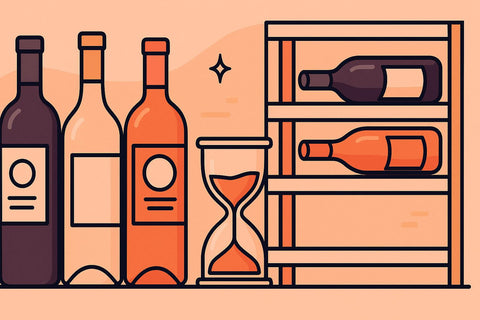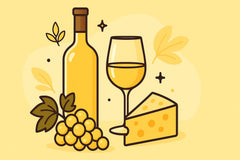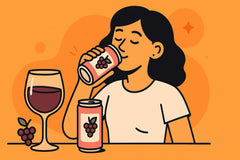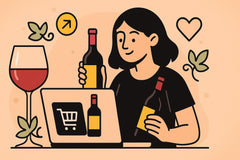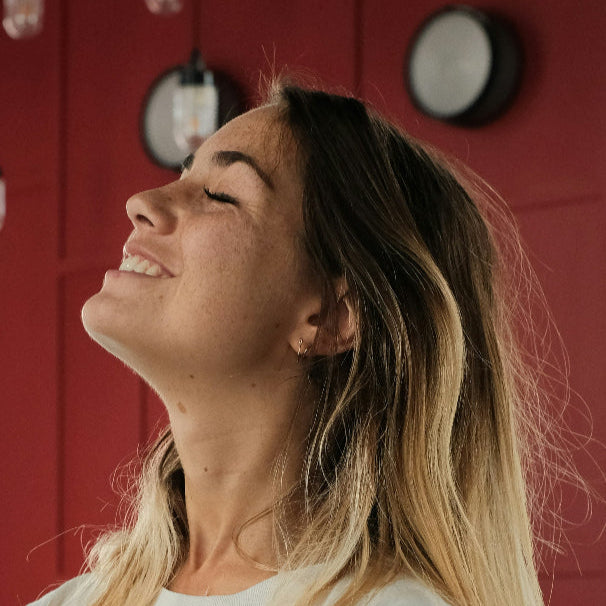Wine is one of those rare things in life that can get better with age—or fall apart completely. The difference between a bottle that matures into something sublime and one that turns into a vinegary mess often comes down to time, type, and how it’s stored. And if you’ve ever stared at a dusty bottle in your pantry wondering if it’s still good, you’re not alone.
Understanding how long wine lasts unopened isn’t just for collectors or sommeliers. It’s for anyone who’s ever bought a bottle for a special occasion that never came, or who’s inherited a few mysterious vintages from a relative’s cellar. Knowing the shelf life of different wine types and how to store them properly can save you from disappointment—and maybe even salvage a forgotten treasure.
This guide breaks down how long unopened wine lasts by type, what factors influence its longevity, how to store it right, and how to tell when it’s time to say goodbye. Whether you’re a casual drinker or a budding enthusiast, this is the kind of information that can make your next glass a whole lot better.
Factors That Affect Wine Shelf Life
Not all wines are built to last. Some are meant to be enjoyed young and fresh, while others are crafted with aging in mind. The difference lies in a handful of key factors that influence how long an unopened wine can sit on a shelf before it starts to decline.
Wine Composition
The internal chemistry of wine plays a huge role in its longevity. Wines with high tannin content—like Cabernet Sauvignon—tend to age better because tannins act as natural preservatives. Acidity also helps; wines with higher acidity, such as Riesling or Sauvignon Blanc, can hold up longer than low-acid wines. Sugar is another factor—dessert wines with high sugar content, like Port or Sauternes, can last decades unopened.
Quality and Production Methods
Mass-produced wines are typically made to be consumed within a few years of bottling. On the other hand, wines from reputable producers, especially those using traditional or low-intervention methods, often have better aging potential. The care taken during fermentation, aging, and bottling all contribute to how well a wine holds up over time.
Type of Closure
Cork or screw cap? It’s not just a matter of preference. Cork allows a tiny amount of oxygen to interact with the wine over time, which can aid in aging—but also increases the risk of spoilage if the cork dries out or becomes contaminated. Screw caps, often used for white and rosé wines, provide a tighter seal and are more consistent, though they don’t allow for the same kind of aging process.
Vintage vs. Non-Vintage
Vintage wines—those made from grapes harvested in a single year—often have better aging potential, especially if it was a good year for that region. Non-vintage wines, which blend multiple harvests, are usually designed for immediate consumption and don’t benefit much from aging.
Storage Conditions
Even the best wine can go bad if stored poorly. Exposure to light, heat, or fluctuating temperatures can accelerate spoilage. Humidity matters too—too dry, and corks can shrink; too humid, and you risk mold. And yes, bottle position matters: wines sealed with corks should be stored on their sides to keep the cork moist.
Shelf Life of Unopened Wines by Type
Red Wines
Red wines generally have the longest shelf life among still wines, but the range is wide. A light-bodied Pinot Noir might last 2–3 years unopened, while a robust Cabernet Sauvignon or Syrah could age gracefully for 10 years or more. Full-bodied reds with high tannins and acidity are your best bet for long-term storage.
Examples:
- Cabernet Sauvignon: 7–10 years
- Merlot: 3–5 years
- Pinot Noir: 2–3 years
Keep in mind that aging doesn’t always mean improvement. Some reds peak early, and waiting too long can mean missing their best moment.
White Wines
White wines are generally more delicate and have a shorter shelf life. Most are best consumed within 1–3 years of bottling. However, there are exceptions. Oaked Chardonnays or high-acid whites like Riesling can age for 5–7 years or more under ideal conditions.
Examples:
- Chardonnay: 2–5 years (longer if oaked)
- Sauvignon Blanc: 1–3 years
- Pinot Grigio: 1–2 years
Acidity is your friend here. The higher the acid, the better the wine can hold up over time.
Rosé Wines
Rosé is the ephemeral poet of the wine world—beautiful, fleeting, and best enjoyed young. Most rosés are meant to be consumed within 1–2 years of bottling. Their delicate flavors and lower tannin levels don’t lend themselves well to aging.
That said, a few high-quality rosés (like those from Bandol) can age for a bit longer, but they’re the exception, not the rule.
Sparkling Wines
Sparkling wines are a bit of a mixed bag. Non-vintage bottles like Prosecco or entry-level Champagne are best enjoyed within 1–3 years. Vintage sparkling wines, especially those made using the traditional method (like Champagne or Cava), can age beautifully for 5–10 years or more.
Examples:
- Non-Vintage Champagne: 1–3 years
- Vintage Champagne: 5–10 years
- Prosecco: 1–2 years
The pressure inside the bottle and the quality of the base wine both play a role in how well a sparkling wine ages. Storage is especially important here—heat can ruin a bubbly faster than you can say “brut.”
Dessert Wines
Dessert wines are the marathon runners of the wine world. Thanks to their high sugar and alcohol content, many can last decades unopened. Port, Sauternes, and Ice Wine are all known for their longevity.
Examples:
- Port: 10–20+ years
- Sauternes: 10–20+ years
- Ice Wine: 5–10 years
These wines are often intentionally oxidized or fortified, which helps them resist spoilage and develop complex flavors over time.
Fortified Wines
Fortified wines like Sherry, Madeira, and Marsala are practically immortal. Thanks to their high alcohol content and oxidative aging processes, they can last 10–50+ years unopened. Madeira, in particular, is famously indestructible—even bottles from the 1800s have been known to drink well.
How to Properly Store Unopened Wine
Wine is sensitive. It doesn’t like sudden changes, harsh light, or being jostled around. If you want your unopened bottles to last—and possibly improve—how you store them matters as much as what’s inside.
Temperature
The sweet spot for wine storage is between 45°F and 65°F (7°C to 18°C), with 55°F (13°C) often cited as ideal. More important than the exact number is consistency. Fluctuating temperatures can cause the wine to expand and contract, pushing the cork out or letting air in.
General guidelines:
- Red wines: 55–65°F
- White wines: 45–55°F
- Sparkling wines: 40–50°F
Light Exposure
UV rays can degrade wine over time, leading to unpleasant aromas and flavors. That’s why most wine bottles are tinted. Still, it’s best to store wine in a dark place or in opaque containers if possible.
Humidity
Humidity levels between 60–70% are ideal. Too dry, and corks can shrink, letting in air. Too humid, and you risk mold growth on labels and corks. A wine fridge or cellar usually maintains the right balance.
Bottle Orientation
Wines sealed with corks should be stored horizontally to keep the cork moist. A dry cork can shrink and allow oxygen in. Screw-capped bottles can be stored upright without issue.
Best Places to Store Wine
If you don’t have a wine cellar, don’t worry. A wine fridge is a great alternative. Otherwise, a cool, dark closet or basement can work just fine. Just avoid places with temperature swings or exposure to heat—like above the fridge, near a window, or in the kitchen.
What to Avoid
Skip the top of the fridge, kitchen cabinets, or anywhere near appliances. These spots tend to be warm and unstable, which is basically wine’s worst nightmare.
How to Tell If Unopened Wine Has Gone Bad
Even if a bottle is sealed, it’s not immune to time and the elements. Here’s how to spot a wine that’s past its prime—without opening it (if possible).
Visual Signs
Check for a leaking cork, pushed-out cork, or wine stains around the neck. These can indicate heat damage or oxidation. Discoloration—like a brownish hue in white wine—can also be a red flag.
Smell
If you do open it, give it a sniff. A vinegar-like aroma, mustiness, or a flat, oxidized smell usually means the wine has turned.
Taste
Wine that tastes sour, overly acidic, or just flat and lifeless is likely past its best. While it might not make you sick, it probably won’t be enjoyable.
When to Discard
If the wine smells or tastes off, it’s okay to pour it out. But if it just tastes a little muted, it might still be usable for cooking.
Frequently Asked Questions
Can unopened wine go bad?
Yes. While wine doesn’t spoil like milk, it can oxidize or degrade over time, especially if stored improperly.
Does wine improve with age?
Some wines do, but most are made to be consumed within a few years. Aging potential depends on the type, quality, and storage conditions.
How long does boxed wine last unopened?
Boxed wine typically lasts 6–12 months unopened. It’s not designed for aging, so it’s best to drink it within that window.
Is it safe to drink expired wine?
Usually, yes. It might not taste great, but it’s unlikely to harm you unless it’s been contaminated.
What’s the best way to extend wine shelf life?
Store it in a cool, dark, and stable environment. A wine fridge or cellar is ideal. Avoid heat, light, and vibration.
Key Takeaways for Wine Longevity
Unopened wine doesn’t last forever, but with the right knowledge and storage, it can last a long time—and even get better. Red wines can age for years, while whites and rosés are best enjoyed young. Sparkling, dessert, and fortified wines offer more flexibility, but storage is everything. Keep your bottles cool, dark, and horizontal (if corked), and you’ll give them the best shot at aging gracefully.


